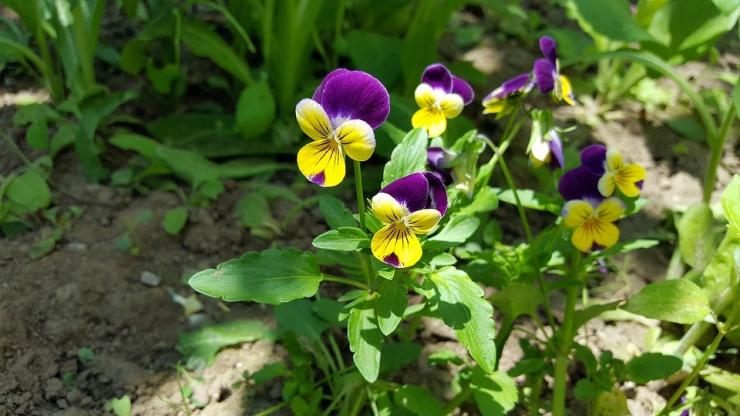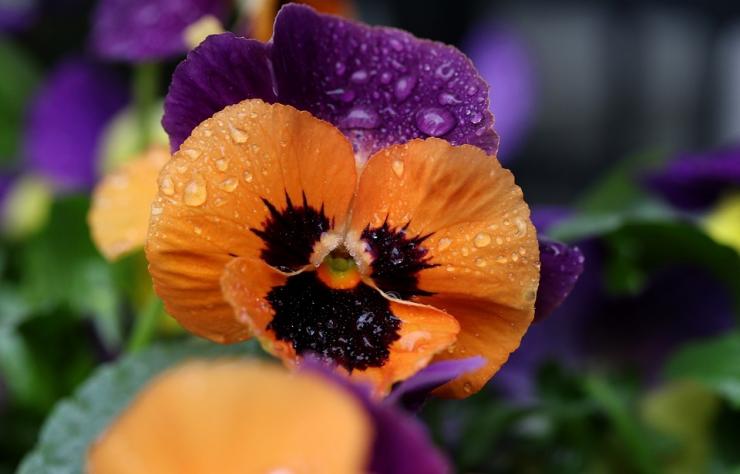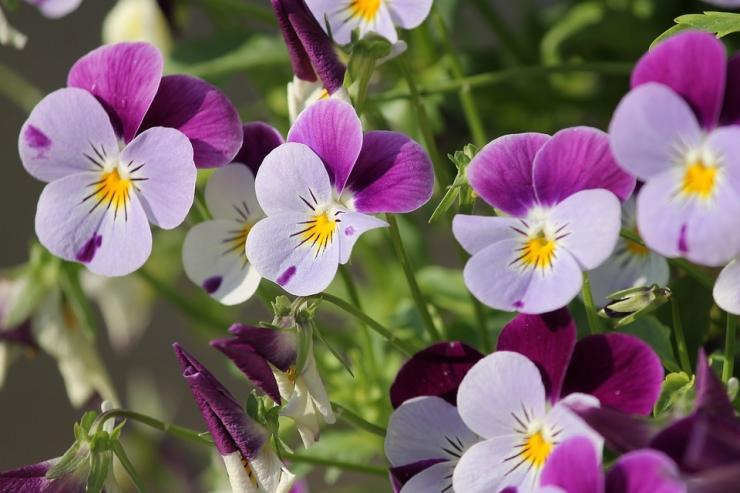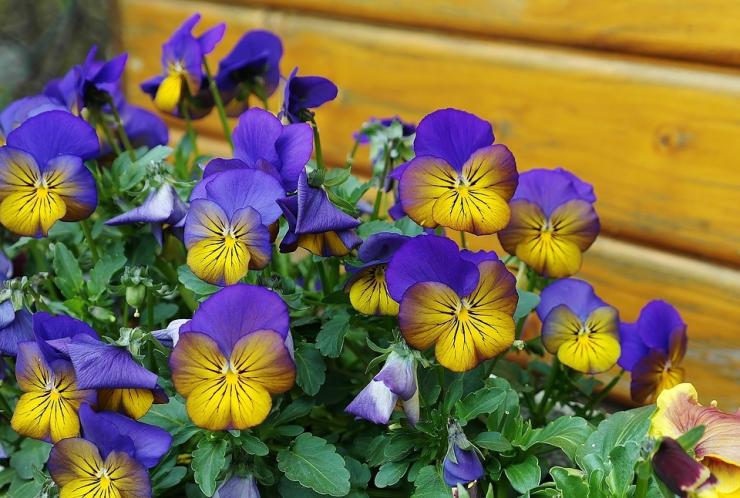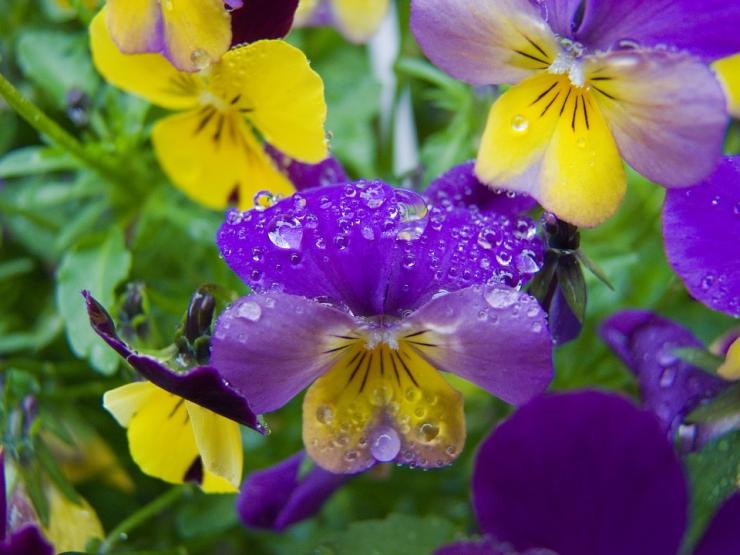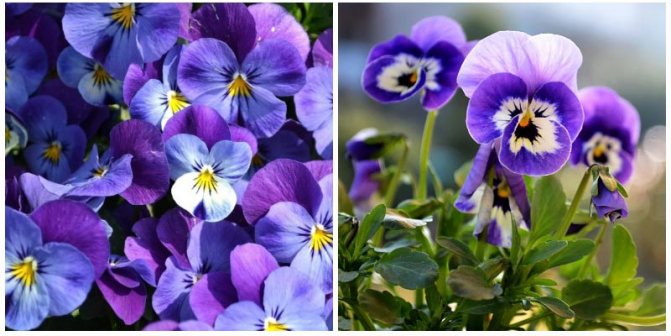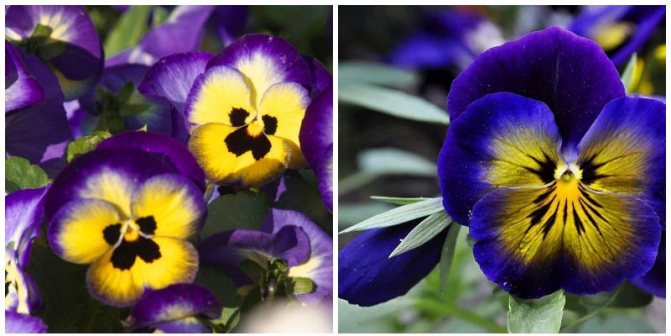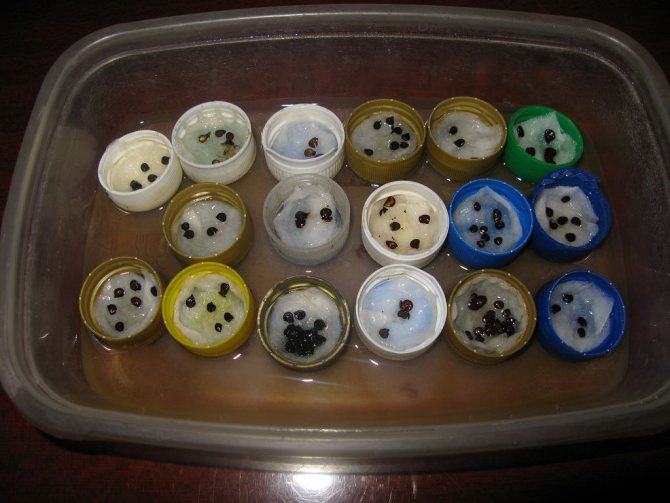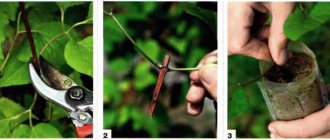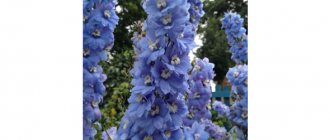Viola Vittroca is a flowering plant that adorns balconies and loggias, terraces and verandas, squares and boulevards with equal success. Relative unpretentiousness, excellent adaptability to unfavorable environmental factors, the longest flowering period and ease of maintenance - all this makes Viola wittrockiana a unique universal flower for landscaping landscapes and interiors.
Another name for the flower is pansies. It was given to the plant for the presence of spots in the center of the bud. It resembles the shape of the eyes. No other violets can be classified as pansies.
Cultivation of Vittrock's viola is possible year-round in any region of our country: in the Urals and Siberia, in the Middle zone and in the south of the Krasnodar Territory, in Moscow and St. Petersburg. The most important aspect is to choose the right timing for planting - in 2020, for example, in the near future you can sow seedlings at home. More accurate information about the timing of sowing, breeding methods, the choice of suitable varieties, the intricacies of agricultural technology can be found on this page.
In the photo below you can see the most diverse varieties of this flowering plant:
Varieties of Pansies
Viola buds by the type of petal color are:
- one-color;
- two-color;
- spotted.
According to the size of the inflorescence, varieties are distinguished:
- small: Flamenco, Rococo, Universal;
- middle: Trimardo, Schweizer Riesen, Maxim, Joker;
- large: Imperial, Power, Shalon Supreme, Dynamite;
- giant: Magnum, Super Majestic Giants.

There are various types of violet tricolor
Wittrock
Perennial plant, reaches 20–35 cm in length. Leaves are oval, deep green in color. The buds are large, up to 10 cm in diameter, and consist of five petals.
The color of the flowers is different:
- white,
- pink,
- dark red,
- blue,
- blue,
- purple,
- inclusions in the form of dark spots or streaks are possible.
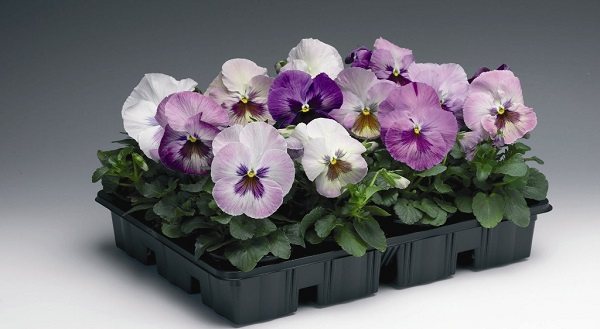

Tricolor
Viola tricolor is considered a wild plant. The plant is used in medicine as part of herbal preparations. The bush is low: from 10 to 15 cm. The leaves are green, oval, elongated.
The flowers are small (up to 2 cm in diameter), the shade of the petals:
- white,
- blue,
- blue,
- purple.
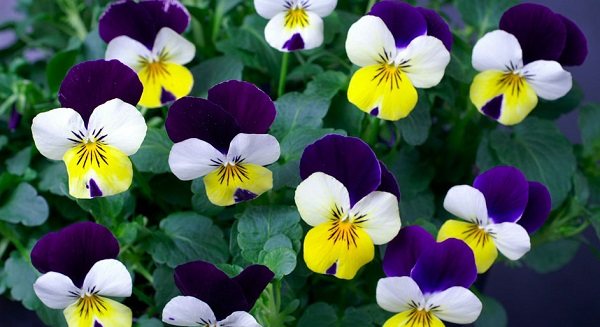

Fragrant
Viola fragrant exudes a very pleasant, delicate scent. The height of the flower is about 15 cm. The leaves are green, round in shape with uneven edges. The buds with a diameter of 2 cm are colored blue, purple, white. Breeders have developed varieties with red, pink and yellow petals. Fragrant Viola is used in perfumery, added to cosmetics.
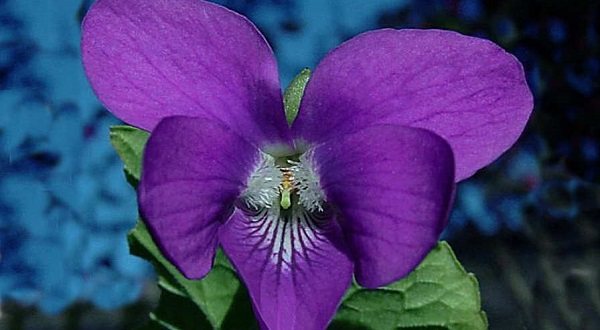

Horned
Refers to perennial garden flowers. The name comes from the small branch (15 mm) located at the back of the bud. Stem 25 cm high. The leaf plates are dark green, oval, elongated. The flower is 5 cm in diameter, blue, blue, violet colors prevail. Also, enthusiasts bred special hybrid varieties with red, yellow, white petals.
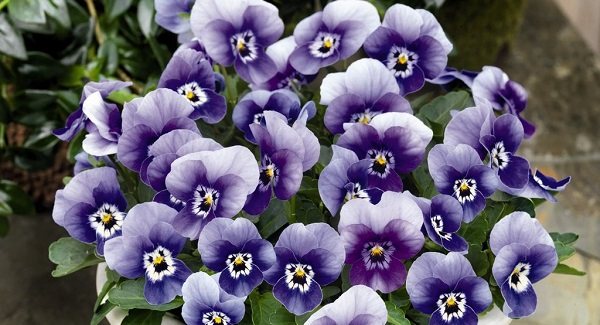

Williams
The original hybrid, obtained by crossing the varieties Viola horned and Wittrock. The species belongs to biennial plants. The original specimens grow in the form of a bush, about 30 centimeters in height.
Buds with a diameter of 4 cm, colored in:
- yellow-burgundy,
- white-blue,
- bronze-yellow color.
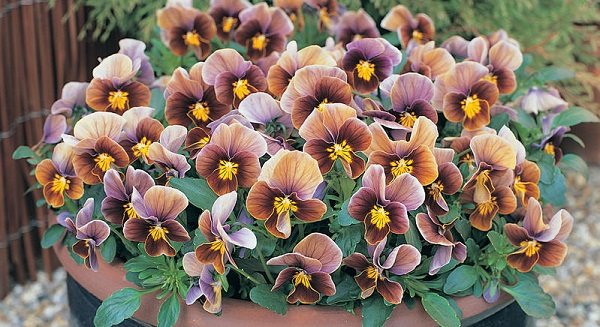

Sororia
An interesting species is also called "moth viola". It belongs to perennial plants, grows in length up to 25 cm. The shape of the leaf plates is heart-shaped. The flowers reach a size of 3 cm in diameter. The buds are blue-white and blue-violet, there are varieties with snow-white buds.
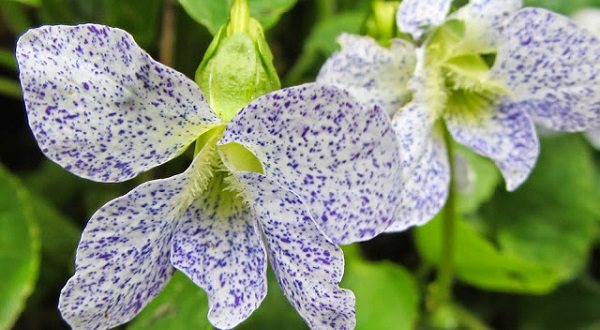

Spotted
A plant with large flowers and corrugated petals. The variety grows well in shady places. Spotted Viola differs from other species in characteristic blotches on the buds.


Plant features
Viola tricolor belongs to the violet family. The plant has many popular names: pansies, field brothers, half-color, tricolor, ax.
The herbaceous annual or biennial grows up to 15–30 cm. The viola range covers the west of Siberia, Western Asia, and Europe. Variegated flowers, abundantly producing seeds, can be seen in meadows and fields, in gardens.
Description of the type viola tricolor:
- Branched stems with many leaves. The leaf plates are of the sessile type, the lower ones are ovoid, the upper ones are oval.
- Viola blooms from May to November. The inflorescence is racemose. There are five petals: the upper two are large, dark, the two middle ones are lighter, the lower petal is wide, light.
- The fruit of the viola is an ovoid capsule divided into three chambers. Small yellow-brown seeds are crumbled after the bolls are ripe.
How to plant seedlings
Useful tips for flower growers:
- prepare containers with several drainage holes;
- almost to the top, the cups are filled with the substrate;
- moisten the soil with water;
- the seeds are planted in the ground (a depth of 0.5 cm is enough);
- watering seedlings from a spray bottle;
- cover with film or glass, put a mini-greenhouse in a warm place with a temperature of + 25 ° C;
- record the sowing date and variety on a label that is attached to the pot;
- monitor the condition of the soil, spray, remove condensate from the lid;
- after 5-7 days, the first young shoots appear in the containers, which signals: you can remove the cellophane;
- the pots are placed in a room with an air temperature of + 15 ... + 18 ° С;
- provide good lighting so that the seedlings do not stretch out;
- seedlings are planted in separate flowerpots, when real leaves have formed on the seedlings (two or three elements);
- watered with phosphorus-nitrogen fertilizers, for better development of the root system and the growth of green mass. Phosphorus also has a positive effect on bud formation in the future;
- in May, pansies are planted in a flower bed near the house, in their summer cottage or in the garden. You can install a beautiful container or a wooden box with a tricolor violet on the balcony.
Soil preparation
It is advisable to place the viola in a special substrate for violets. In stores, you can buy quality soil from well-known manufacturers.
When choosing a soil, pay attention to:
- shelf life of the potting mix;
- availability of a quality certificate;
- compliance with the chemical and acid composition requirements for a particular type.
Pansy seeds are often sown in convenient containers with natural material - peat pots or tablets. If it is not possible to buy a ready-made substrate, then deciduous, sod soil, compost, peat, river sand are mixed in equal quantities.
On a note! The soil mixture prepared by yourself must be disinfected. The substrate for violets is placed in the oven, calcined for 30 minutes at a temperature of + 100 ° C.
Seed preparation
Planting material purchased in an agricultural store, before sowing in the soil, must be treated with growth stimulants. If the grains were collected on their own, then they are placed for 20-30 minutes in a weak solution of potassium permanganate.
Choice of capacity
Various types of containers are suitable for sowing seeds:
- cups;
- pots;
- boxes;
- peat tablets in pallets;
- trays;
- seedling cassettes.
The main thing is that there are drainage holes in the containers. Transplant seedlings into large flowerpots as they grow.
Landing scheme
At the end of winter or with the arrival of the first days of March, you can start planting seeds. The process is simple, but patience and accuracy are required, adherence to the order of actions, the growing regime: humidity, temperature, watering.
Helpful hints:
- take a sowing container with a drainage hole;
- fill with prepared soil;
- poured with water with fungicides;
- prepared seeds are sown to a depth of no more than 0.5 cm;
- sprayed with settled water, not cold, optimally at room temperature;
- cover with a lid: it turns out a homemade mini-greenhouse;
- the container or pot is placed in a warm zone (+ 22 ... + 25 ° C) for a week;
- crops are checked every day: watering and ventilating;
- it is worth waiting for the first shoots, and you can move the container with seedlings to a well-lit place with a temperature of + 16 ° C;
- after 14–20 days, if necessary, young pansies are transplanted into larger pots;
- for good development of seedlings, fertilizing with liquid fertilizers is carried out;
- regularly moisten the ground, maintain optimal humidity (60–70%) and indoor air temperature (+ 12… + 16 ° С);
- grown and strengthened seedlings are planted in a permanent place at the end of spring.
Ultraviolet lamps are used for additional illumination.


Viola - growing from seeds
First you need to decide on the place where the plant will grow, and it is good news that the viola will take root both in a sunny area and in the shade. When figuring out how to grow viola from seeds, it is worth noting that in the sun the flowers will be large and bright, but flowering will not last long. It is better to choose an area that is illuminated by the sun in the morning and at sunset, and at other times it should be protected by a shade. Not suitable for growing and humid low places.
There are some grooming tips you can use to observe beautiful blooms:
- It is important to water the flowers periodically, since the root system is on the surface (at a depth of no more than 20 cm). Humidification should be carried out as needed. This should be done in the evening, using water heated in the sun.
- In order for the flower to receive nutrients, it is recommended to apply top dressing every 3-4 weeks. Considering that each square meter should account for 25 g of superphosphate. The granules should be deepened into the ground, and then irrigated.
- When the sixth leaf appears, you can pinch the stem, thanks to which you can achieve better tillering.
- If flowering has deteriorated or when new buds are not forming, it is necessary to prune at a height of 9-12 cm from the ground. After that, fertilizing and water are introduced, which will promote the growth of new shoots and re-flowering.
Growing and caring for seedlings
Useful information:
- Viola belongs to unpretentious plants, tolerates small frosts well.
- Violet tricolor loves coolness.
- The species grows and develops better in diffused lighting.
- Direct sunlight has a detrimental effect on the plant.
- It is important to monitor the condition of the soil, water regularly.
- After the formation of the green mass, complex fertilizers (mineral compositions) are applied once a week.
Temperature
For germination of seeds, a temperature of + 22 ... + 25 ° С is required, seedlings develop well at + 13 ... + 15 ° С. An adult plant prefers moderate values: + 18 ... + 20 ° С.
Lighting and supplementary lighting
When growing Pansies, you need to choose a well-lit place, but the direct rays of the sun can harm the flower. Seedlings at the time of growth are additionally illuminated with ultraviolet lamps: a simple technique does not allow the plant to stretch.
Humidity and watering
The development and vegetation of the plant depends on the correct moisture of the soil.
It is useful to adhere to the following requirements:
- water regularly with warm (+ 22 ° С), settled water;
- spray seedlings from a spray bottle;
- maintain optimum air humidity: 65–75%;
- remove accumulated water from the pan to prevent root decay and the appearance of a black leg - a dangerous fungal disease.
On a note! In case of extreme heat, dryness, unsuitable microclimate in the home, it is recommended to use a humidifier.
Top dressing
Like any plant, pansies need fertilization. The first feeding begins when 3-4 leaves appear with nitrogen and phosphate substances. It is useful to fertilize the tricolor violet during the formation of the green mass and root system. Useful mineral fertilizers are applied according to the instructions in a diluted form once every two weeks. Liquid potassium-phosphate substances are watered with the beginning of the ejection of buds, for exuberant flowering.
Pansies do not tolerate the addition of manure to the soil.
Seedling picking
The first planting of a young viola is performed when 3-4 leaves appear. Timely surgery accelerates the growth of a beautifully flowering species.
This requires:
- take individual pots, larger in volume than the previous ones, always with drainage holes;
- pour soil into flowerpots;
- carefully remove the seedlings without damaging the roots.
Further:
- examine the root system;
- transplanted into prepared cups with a substrate;
- water the flowers with warm, of course, settled water with the addition of organic fertilizers, fungicides;
- containers are placed in a well-lit place, with a lack of light, phytolamp illumination is required;
- room temperature - at the level of + 15 ... + 17 ° С, humidity - 70%;
- watering the substrate as the earthen coma dries;
- the foliage is sprayed with water from a spray bottle.
Pinching
After the appearance of 8-10 leaves, you can pinch the top growth point of the flower. A simple operation promotes better growth of the green mass.
For a beautiful and long-lasting flowering of the pansy bush, faded buds, affected, withered leaves are removed in time.
Preparing the soil for planting viola
Viola prefers to grow on fertile, permeable soil. Therefore, it is necessary to prepare the ground in advance. It can be purchased at a specialty store, but experienced growers prepare the soil on their own. To do this, they mix fertile soil, peat, humus.
You can grow seedlings in pure peat. This will also produce strong plants.
Fresh articles for gardeners, gardeners and florists
Tomato planting lunar calendar in february 2020
Lunar calendar planting pepper in March 2020
Diseases of strawberry photos and their treatment
How to feed cucumbers in a greenhouse to have a good harvest
Seedling diseases and pests, how to fight
When the rules for caring for the plant are not followed, problems of various kinds develop:
- Powdery mildew. A dangerous disease, negative manifestations are visible on the leaves, signs of damage: white bloom, wilting of plant parts, poor growth. The damaged areas are removed, the treatment is carried out in a timely manner with a solution of Bordeaux liquid (concentration - 1%).
- Rust. Brown spots are found on the foliage. It is necessary to get rid of the infected parts of the plant. Treatment is effective, as when identifying tricolor powdery mildew on a violet.
- Rot. The lesion appears on the roots and aerial parts of the plant. The damaged parts of the flower are removed, fungicides are used (Funlazol, Topaz, Skor), and the correct watering is monitored.
- Blackleg. It occurs when the soil is highly moistened. Reduce watering, use Fitosporin.
- Spider mite. A thin cobweb is found on the leaves and buds, the plant dries up.The flower is washed under water, two or three times (at a certain interval, according to the instructions), treated with insecticides.
- Gall nematode. A dangerous parasite settles on the roots, leading to the death of pansies. Sodium nitrate is used to destroy the pest.
- Mother of pearl. The pest eats leaves and buds. Citkor and Kinmiks preparations are used to destroy the insect.
- Aphid. The tiny insect lives on the green part of the plant, actively feeds on the sap of the flower. Viola is treated with chemical insecticides, Aktara, Mospilan, Konfidor, Aktellik are used.
The following factors are attributed to improper care of viola seedlings:
- over watering;
- the plant is in a shaded area;
- non-compliance with the temperature regime;
- increased dryness of the air;
- the florist uses hard water to irrigate the soil;
- flowers are planted in soil that is not suitable for acidity or soil composition.
When treating a plant with chemicals, be sure to wear protective clothing: gloves, a gauze mask, glasses, a scarf. Do not eat, drink or smoke while working with chemicals. Upon completion of the disinfection, wash your hands and face with soap and rinse your mouth with water. Food and water can be consumed 2 hours after processing.
Varietal and species diversity
Do not confuse meadow and garden viola. The first has small, inconspicuous flowers. The second is larger and brighter.
The cultivars are divided into two categories according to the size and shape of the flowers:
- small - diameter 3 - 7 cm;
- large - 8 - 10 cm.
Small varieties of viola are optimal for planting in the northern and western zones of the personal plot. They are less susceptible to temperature fluctuations.
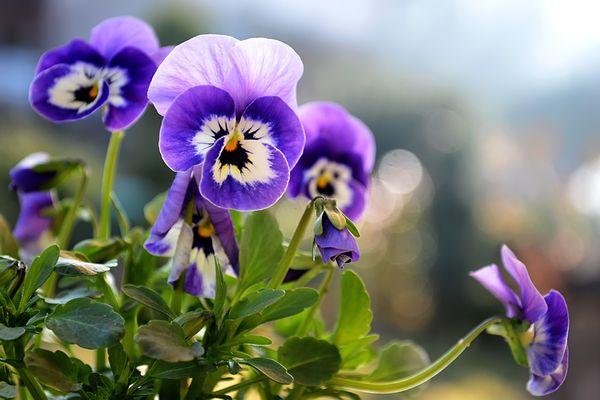

Wittrock
The height of the viola is 13 - 15 cm. The variety is not capricious, biennial. The preferred location is in a sunny area, protected from strong winds. Temperature fluctuations are not terrible for the plant. Bushes in containers on the balcony look good.
When grown by seedlings, Viola Wittrock blooms in the first season. When sown in open soil, flowers appear the next year.
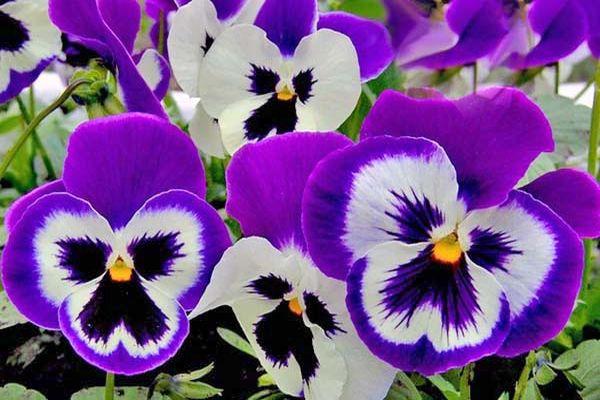

Tricolor
The variety is divided into varieties: Tiger's Eye, Cashier, Shalom Purim. Viola is not capricious, resistant to cold, blooms even in a shaded place. Produces abundantly delicate and persistently scented buds.
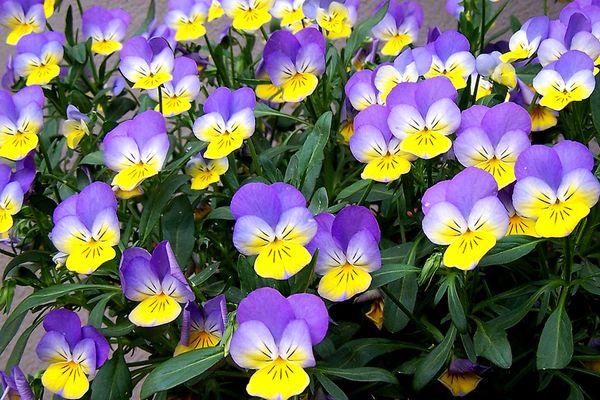

Fragrant
It is also divided into varieties that differ in color:
- Black corduroy (black-purple);
- Carol (white-pink);
- Becky-Gras (pale pink);
- Annie (deep pink);
- Carol Lacton (violet-blue);
- James Mary Paul (purple with rounded petals).
The plant reaches a height of 15 cm. The variety is resistant to frost, feels good in a shaded place on clay soil. Flowering occurs in two waves: in May and August. The buds exude an intense, delicate aroma.
When and how to plant outdoors
The grown pansies are moved at the end of spring. An important point is the absence of late frosts at night.
Before planting tricolor violets, prepare the site and seedlings:
- dig up the soil;
- make holes with an interval between holes from 15 to 20 cm;
- apply organic fertilizers in moderation;
- carefully remove the flower from the pot;
- browsing the root system;
- young plants are placed in prepared pits;
- sprinkle the roots with earth;
- lightly press down the soil around the plant;
- water the soil with warm water with the addition of fungicides;
- the flower can be mulched with sawdust, straw: it is easier to retain moisture, reduce the risk of weeds and parasite attacks.
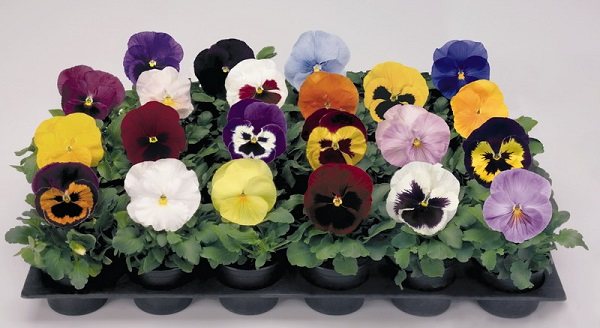

Additional tips and tricks
Pansies often refuse to bloom due to late sowing on seedlings. If the deadlines are too long, then you will have to sow seeds immediately into open soil. It is advisable to use a distribution bed.
To achieve lush flowering, it is necessary to cut off fading flowers in a timely manner. Large varieties of viola are grown in waves for this purpose.After the first flowering, the bushes are cut, the second appearance of the buds is noted in the fall. Moreover, the autumn wave turns out to be more abundant and longer. The horned viola is considered the most luxuriantly blooming.
For the winter, pansies are insulated, covered with spruce paws, hay, and a special material.
Growing viola with seeds for seedlings is not difficult. The main thing is to follow the simple rules for caring for seedlings, water and feed in a timely manner, and protect against infection and insects.
Seed collection
How to proceed:
- In violets, tricolor planting material begins to be harvested in late summer or early autumn.
- Faded buds turn into small boxes, inside of which seeds are formed.
- Carefully cut off the formation with grains, pour the seeds onto the fabric.
- The collected planting material is dried at room temperature.
- In the future, the seeds of the violet tricolor are stored in bags and in the refrigerator.
- The package must indicate the variety and variety, the date of collection of seeds.
Pansies will help to add bright colors and tenderness to a summer cottage, a balcony and a flower bed next to the house. Spectacular appearance Violet tricolor has taken root well in regions with a temperate climate, the plant is unpretentious, care is within the power of flower growers with and without experience. After studying the material in the article, it will be easier to figure out when to sow Pansies for seedlings, what conditions the Viola plant prefers.
How to grow Pansy seedlings at home? More helpful tips in the following video:
Step-by-step sowing of tricolor violets for seedlings
And now we propose to take a closer look at the agricultural technology of culture. Sowing a tricolor violet step by step starts with three simple things:
- stratification of seeds (put the package in the refrigerator for 7-10 days);
- soaking in a solution of a biological stimulant (aloe juice, succinic acid solution, "Epin", etc.) for 8-10 hours;
- drying seeds for subsequent sowing.
Note! If you purchased seeds in a dragee foothill, then after sowing, it is imperative to achieve complete dissolution of the shell.
Prepare a nutrient substrate before sowing Viola wittrockiana. It should be lightweight and well structured. It is advisable to add vermiculite and perlite to it. These soil conditioners make the soil more breathable and structured, preventing salt crust from forming on its surface.
First, bake the soil in the oven for 3 hours to destroy pathogenic microflora. Then spill it with a warm solution of "Fitosporin". After the soil has dried, add perlite and vermiculite to it (about 200 ml each per 1 liter of soil).
Any bowl with sides more than 5 cm high is suitable as a planting container. You need to pour 3 cm of soil into it and compact it with your fingers. Moisten the surface with water from a spray bottle. Then spread the seeds of Vittrock's viola over the surface of the soil, you do not need to close them up, sprinkle them with earth too. Moisten the surface of the soil again with a spray bottle. Cover the bowl tightly with glass or plastic wrap. Place in a dark, warm place.
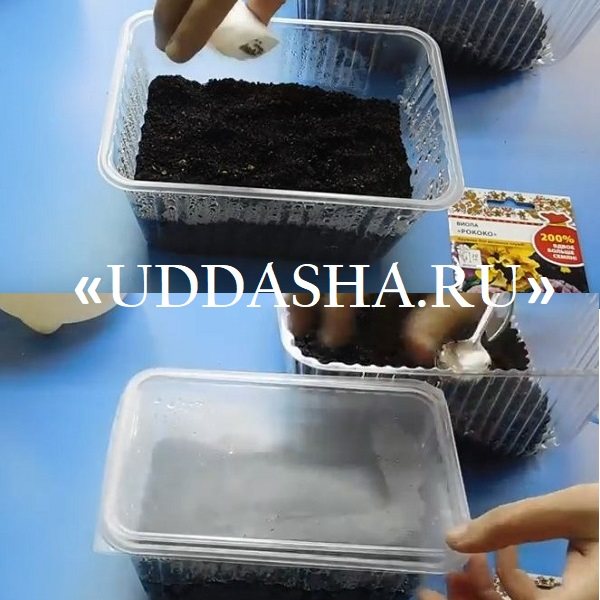

The second method of planting Wittrock's viola is suitable for those who do not have the opportunity to provide additional light to the plants. In this case, grooves up to 7 mm deep are made along the compacted soil surface. They are moistened and seeds are sown in them. There is no need to close the grooves. Cover with foil and wait for shoots. When they appear in large quantities, their pulling will begin. At this time, it will be possible to sprinkle the earth to the level of the soil surface in a bowl.
If the step-by-step planting of seeds of a tricolor violet for seedlings is carried out in compliance with all standards of agricultural technology, then after 2 weeks, friendly shoots will appear on the surface.
Note! Many growers are wondering when to plant Vittrock's viola in the Urals and Siberia, since these regions are distinguished by a long spring.Always count this way: count 70 days from the estimated date of disembarkation in open ground. This will be the optimal time for sowing viola seeds.
Picking - tips from professionals
When growing seedlings indoors, you need to pick the pansies twice. It is best to do this the first time when more than two leaves appear on the plant about 14 days after planting.


After that, it is better to place the viola in individual containers. The second time the seedlings dive in two weeks - 20 days according to the 6 by 6 cm scheme.

